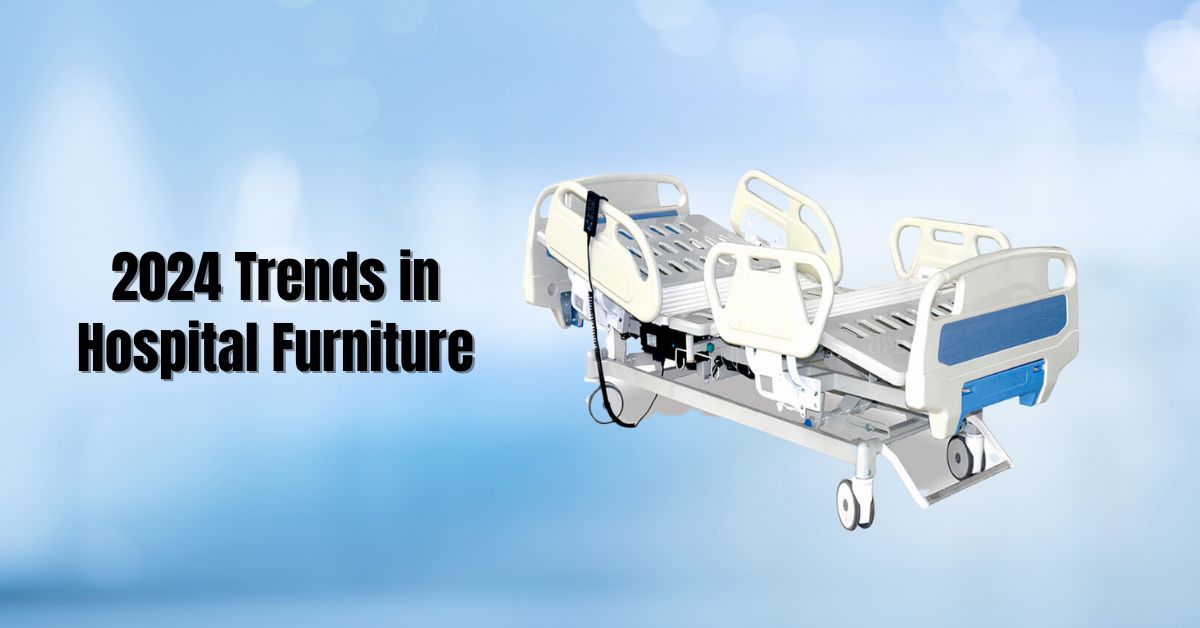As we navigate through 2024, the landscape of healthcare continues to evolve, and with it, the design and functionality of hospital furniture. Gone are the days of sterile, uncomfortable spaces that prioritize function over form. Today’s hospital furniture blends cutting-edge technology, ergonomic design, and a focus on patient well-being to create healing environments that cater to both physical and emotional needs. Let’s explore the exciting trends shaping hospital furniture in 2024 and examine which innovations are likely to become permanent fixtures in healthcare settings.
Smart Integration: The Rise of Tech-Enabled Furniture
One of the most significant trends in hospital furniture is the integration of smart technology. Beds equipped with sensors now monitor patient vital signs, movement, and sleep patterns, providing real-time data to healthcare providers. These smart beds can automatically adjust positions to prevent pressure ulcers and even alert staff if a patient attempts to get up unassisted.
Similarly, smart chairs in waiting areas and patient rooms now come with built-in charging stations for devices and interactive screens for patient education and entertainment. This tech integration extends to overbed tables, which can now transform into workstations for medical staff, complete with access to electronic health records.
Modular and Flexible Designs: Adapting to Changing Needs
Flexibility is key in modern healthcare environments. Modular furniture systems allow hospitals to quickly reconfigure spaces to meet changing demands. From expandable room dividers to convertible seating arrangements, these adaptable pieces enable healthcare facilities to optimize space utilization and respond swiftly to varying patient loads or emergency situations.
Innovative storage solutions, such as wall-mounted cabinets with fold-out workstations, maximize floor space while providing essential functionality. This trend towards modular and multi-purpose furniture is likely to persist as hospitals seek to increase efficiency and adaptability.
Biophilic Design: Bringing Nature Indoors
The concept of biophilic design – incorporating natural elements into indoor spaces – has gained significant traction in hospital furniture trends. Wood-grain finishes, nature-inspired patterns, and even live plant integrations are becoming increasingly common in healthcare settings.
Furniture that mimics organic shapes and textures not only creates a more welcoming atmosphere but has also been shown to reduce stress and promote healing. Look for more hospital furniture featuring curved lines, earth tones, and materials that evoke a connection to nature.
Infection Control: Beyond Surface Treatment
In the post-pandemic era, infection control remains a top priority. Hospital furniture in 2024 goes beyond antimicrobial surface treatments. We’re seeing the development of materials that actively neutralize pathogens and self-cleaning surfaces that use nanotechnology to break down contaminants.
Seamless design is also trending, with furniture featuring smooth, jointless construction that eliminates crevices where bacteria can hide. These innovations in materials and design are setting new standards for hygiene in healthcare environments.
Ergonomics and Comfort: A Holistic Approach
The days of uncomfortable hospital chairs and beds are numbered. Ergonomically designed furniture that supports proper posture and reduces physical strain is becoming the norm. From adjustable-height workstations for medical staff to pressure-relieving mattresses for patients, comfort is no longer an afterthought.
Moreover, furniture designed to accommodate a wide range of body types and mobility levels is increasingly common. Bariatric-friendly seating, easily adjustable bed rails, and chairs with multiple support points cater to diverse patient needs.
Sustainable Materials: Eco-Conscious Healthcare
Sustainability is a growing concern in healthcare, and hospital furniture is no exception. We’re seeing a shift towards eco-friendly materials such as recycled plastics, sustainably sourced wood, and low-emission fabrics. Furniture manufacturers are also focusing on durability and longevity, creating pieces that withstand rigorous use and reduce the need for frequent replacements.
Cradle-to-cradle design principles are gaining traction, with more hospital furniture being produced with eventual recycling or biodegradability in mind.
Personalization and Privacy: Balancing Openness and Seclusion
While open floor plans have been popular in recent years, there’s a growing recognition of the need for privacy in healthcare settings. Furniture that can create personal spaces within larger areas is on the rise. Think modular seating with high backs for visual privacy or portable screens that can quickly define individual zones.
Customizable elements, such as adjustable lighting integrated into headboards or color-changing privacy glass, allow patients to personalize their environment, contributing to a sense of control and comfort during their hospital stay.






